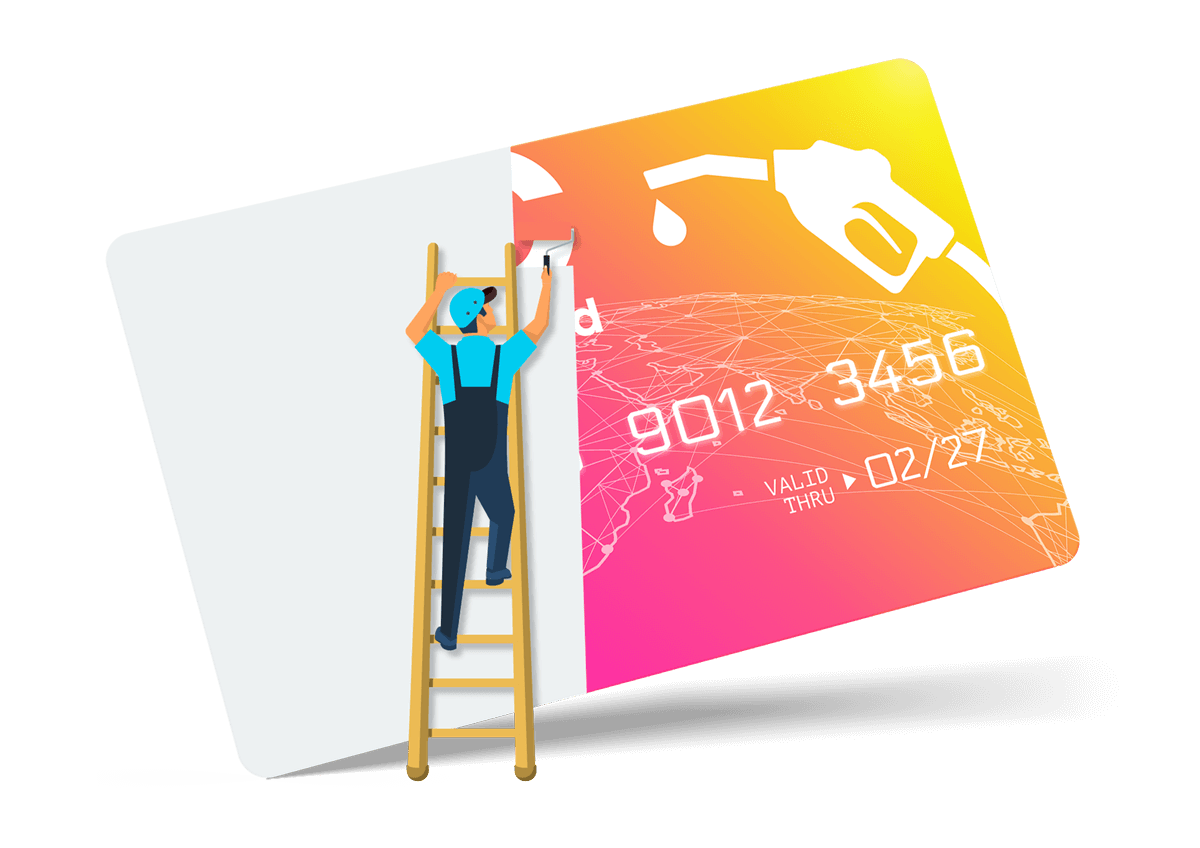
How Do Digital Fuel Cards Make Life Easier for Fleet Drivers?
Challenges in everyday fleet operations
Fleet drivers’ daily routines are often dictated by tight schedules and high pressure to make deliveries on time and efficiently. Fuel stops are often time-consuming interruptions as conventional fuel cards need to be presented at the checkout and confirmed with a PIN – often with additional waiting time due to long queues. These delays add up over several stops and have a significant impact on the workflow. In addition, many drivers have to document transactions and collect receipts, which is time-consuming and prone to error. Finally, physical fuel cards require constant vigilance to avoid security risks such as skimming and phishing, as well as to prevent theft or loss.
Digital Fuel Cards as a relief for drivers
Digital fuel cards provide an effective solution to these challenges, making day-to-day operations and fleet management more efficient and secure. Instead of physically presenting the fuel card and waiting for confirmation at the checkout, drivers can use the digital fuel card to process payment directly at the pump via app. This saves valuable minutes at each fuel stop and reduces the number of steps needed to complete the transaction. Companies benefit from smoother processes and lower operating costs through shorter downtime and optimized workflows. Time-consuming document management is also eliminated because all transactions are recorded automatically and centrally. Digital fuel cards also offer significantly greater security than physical cards, as risks such as skimming, phishing, or the loss and theft of cards are minimized through exclusive use within the app and additional authentication measures.
Practical implementation and integration
Thanks to modern solutions such as the Connected Fueling Platform from PACE, the digitization of fuel cards can be seamlessly integrated into existing fleet management systems. Through a secure connection, the existing authorization process is directly embedded into the Connected Fueling platform using the industry-standard IFSF protocol.
Existing station and product identifiers are adopted, eliminating the need for additional configuration. With the white-label app solution, partners can quickly launch their own branded app without any development effort, while retaining future customization options. Drivers can easily and quickly use the digital card in the app as a new payment method.

Security standards and technology
Security plays a central role in digitalization. PACE ensures the highest standards based on the IFSF protocol to enable secure communication between fuel card issuers and the connected fueling platform. New technologies such as IoT and cloud solutions further increase efficiency: fleet managers can digitally manage fuel cards and monitor transactions in real time. Measures such as two-factor authentication ensure that only authorized users have access, increasing security and reducing the administrative burden for fleets.

Conlusion and future outlook
Overall, digital fuel cards make life easier for fleet drivers in many ways: fuel stops and transactions are accelerated, tedious paperwork and the need to carry physical cards are eliminated, and the security risk is significantly reduced. As a result, drivers’ daily lives are noticeably less stressful and more efficient, while companies benefit from cost savings and smoother operations.
With the ongoing digitalization and the use of modern technologies such as IoT and cloud systems, the potential of digital fuel cards will continue to grow. By integrating them into an app that drivers use regularly, the digital fuel card becomes not only a tool for efficient payments, but also a platform for additional services such as car washes or promotional discounts to boost shop sales. This expansion of functionality strengthens user engagement and creates new added value for businesses. These developments not only promise even greater relief for drivers but also provide a flexible and sustainable foundation for modern fleet management.



